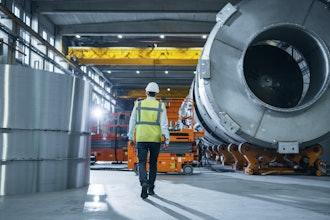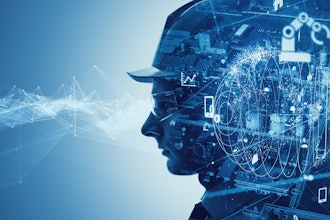Weapons I: Stunning Accuracy in the Hands of the Many
Let’s set the stage with an exchange from the very good movie, Shooter…
Bob Lee Swagger: Suppose I was looking for man who could make a 2,200 yard cold bore shot, who's alive that could do that?
Mr. Rate: Seems I heard about a shot like that being made not too long ago, said the guy's name was Bob Lee Swagger. Never met the man, so I wouldn't know.
Bob Lee Swagger: Ya, they said that alright.
Mr. Rate: They also said that artificial sweeteners were safe, WMDs were in Iraq and Anna Nicole married for love.
Successfully making a long-distance, sniper-style shot takes a lot more than steady hands and holding one’s breath, also taking into consideration such things as ‘how far the round is going to fall, the distance of the shot, temperature, humidity, wind and the curvature of the earth.’ Even a 1,000-yard shot is incredibly tough to make. To help put things in perspective, a 1/4-mile (1,320 feet) dragstrip measures a mere 440 yards, so a mile is 1,760 yards (or 5,280 feet). It’s almost unimaginable that a bullet could hit a target over such a distance, let alone consistently.
According to this article at PopSci, new technology ‘will allow almost anyone’ to hit targets up to a mile away. Behold the Linux-based TrackingPoint 338TP, nicknamed the Mile Maker…
![]()
Starting off as a design for a U.S. Marine sniper rifle, the system laser ‘tags’ your target while taking into account all of the tricky and difficult stuff above and including, for instance, barometric pressure. Then…
…data is then passed on to the built-in Linux computer. Once you've tagged the target, the rifle will automatically track it. You then bring your reticule, the optical target-aiming point, to match the rifle's computed impact point. Once you've matched it up and you decide to take the shot, you pull the trigger and the TriggerLink computer works out all the details needed to hit the target. Thus, and this is surprising until you get used to it, there may be up to a second of delay between the time you pull the trigger and when the shot goes off.
Keep in mind that, even with the gee-whiz tech, skill helps. A lot. In U.S. Army testing, a trained military rifleman using the TrackingPoint setup would hit ‘about 5 percent of the time. In a word, that’s impressive.’ Yes. Why, yes it is.
Expect the tech to be available in the second quarter, for about $40K, with an entry-level version of the rifle alone starting at $7,495.
Here’s a scary thought: it’ll darned sure be worlds more accurate than a mail-order, 6.5 mm Carcano Model 91/38.
Weapons II: The Fifth Element Element
Appearing to be straight out of 1997’s The Fifth Element (a fun, well-done, Bruce Willis Saves the World movie, by the way; wonderfully off-the-wall), an integrated assault rifle prototype for the Canadian Armed Forces (They have those?) could easily have played a starring role in the bad guy’s arms-dealing scene…
In real-life, the CAF smart gun comes from the SIPES (Soldier Integrated Precision Effects Systems) project and in development since 2009. The high-powered, lightweight rifle has…
…new lightweight telescoped ammunition, and a secondary effects module that adds either a three-round 40 mm grenade launcher or a 12-gauge shotgun, there is also a NATO-standard power and data bus to allow the attachment of smart accessories, such as electro-optical sights and position sensors that connect to command and control networks.
That’s according to this interesting read at Gizmag.
Jean-Baptiste Emanuel Zorg would be thrilled.
Cloud-connected killing. Huh. I guess we shouldn’t be surprised, huh?
Internet Pioneer Vint Cerf Warns That We Could Lose Everything
The ability to reconstruct the past helps future generations understand not only the way things were, but how they became future generations at all. Perhaps, it also helps us understand the whole learning-by-our-mistakes thing.
Vint Cerf, today a Google VP, has warned that pretty much everything that we’re doing now could be lost—not to a plague, zombie/robot apocalypse, or solar flare that wipes out every storage medium on the planet, but by—get this: software updates.
According to this interesting read at The Telegraph UK, Cerf Said…
“We stand to lose a lot of our history. If you think about the quantity of documentation from our daily lives which is captured in digital form, like our interactions by email, people's tweets, all of the world wide web, then if you wanted to see what was on the web in 1994 you'd have trouble doing that. A lot of the stuff disappears.
“We don't want our digital lives to fade away. If we want to preserve them the same way we preserve books and so on we need to make sure that the digital objects we create will be rendered far into the future.”
He makes the fascinating point that, well, software changes—quickly. (Heck, sometimes we can’t open a Word file created and saved only two Office generations ago.) Cerf’s not talking a decade or two, but thousands of years in our future.
Here’s more on the problem—and a go-to though archaic solution in a few short paragraphs…
“Sometimes the standards we use to produce those objects fade away and are replaced by other alternatives and then software that is supposed to render images can't render older formats, so the images are no longer visible.
“This is starting to happen to people who are saving a lot of their digital photographs because they are just files of bits. The file system doesn't know how to interpret them, you need software to do that. Now you've lost the photograph in effect.
“If there are pictures that you really really care about then creating a physical instance is probably a good idea. Print them out, literally.’
What’s Ancient Aliens going to talk about in a thousand years? Pyramids, temples, stunning wisdom, monoliths, Neolithic skeletons embracing? Already been done. What do we have, at least on the already pockmarked surface of the 21st century?
Even if our digital lives can be recreated, I’m not sure that selfies, social media, five-dollar foot-longs, Madonna, J-Lo, rappers at awards ceremonies whining like schoolgirls, Kim K’s butt, or even the jaw-dropping levels of technology that we nonchalantly carry around (and squander) every day will adequately portray human achievements of the 21st century. Or, will they?
Mr. Cerf is likely onto something. Before that happens, though, perhaps we need someone—a global group of wise, completely unbiased elders, for instance—to first determine and log stuff from the 21st century that will be truly, accurately, and undeniably important for future generations to realize and understand. I mean, well, going way beyond the premise that the bright, glorious, inspiring promise of a new day is held not within a crystal skull but a mass-produced box of genetically modified, barely nutritious cereal in the cupboard.


















